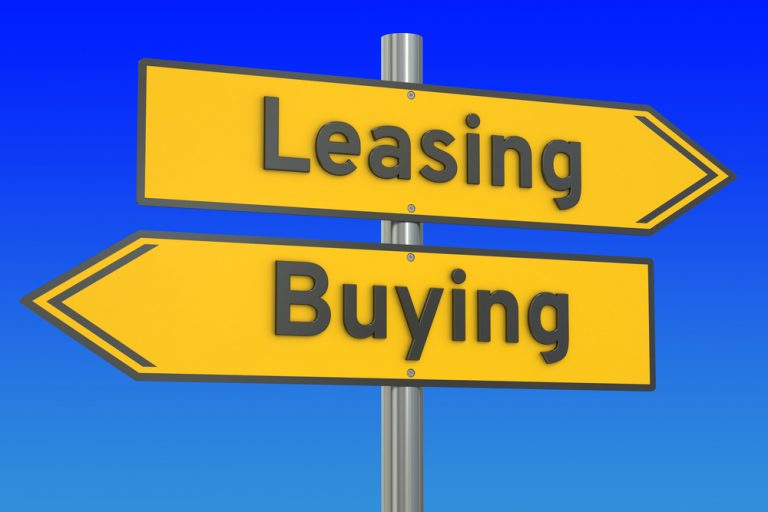
Deciding whether to lease or buy assets is a significant decision for any business, with each option carrying its own financial implications, benefits, and drawbacks. This guide provides a comprehensive overview to help you determine the best option for your business based on key factors.
1. Initial Costs and Cash Flow
- Leasing:
- Lower Initial Outlay: Typically requires a smaller upfront payment, preserving cash for other operational needs.
- Predictable Monthly Payments: Fixed payments simplify budgeting and cash flow management.
- Cash Flow Management: Maintains liquidity, which is crucial for businesses with limited initial capital or variable cash flows.
- Buying:
- Higher Initial Outlay: Generally involves a significant upfront investment or down payment.
- Capital Allocation: Immediate cash outflow reduces available funds for other investments or operational needs.
- Long-Term Cash Flow: No further payments after the asset is paid off, improving cash flow over time.
2. Ownership and Control
- Leasing:
- No Ownership: You do not own the asset, limiting control over modifications and usage.
- Flexibility: Easier to upgrade to newer models or technology at the end of the lease term.
- End-of-Lease Options: Choices to return, renew, or purchase the asset.
- Buying:
- Full Ownership: Provides complete control over the asset, including modifications and resale.
- Equity Building: Ownership allows you to build equity, beneficial if the asset retains or increases in value.
- Residual Value: You retain any residual value, advantageous if the asset maintains or increases in value.
3. Tax Implications
- Leasing:
- Expense Deduction: Lease payments are generally fully deductible as business expenses, reducing taxable income.
- Off-Balance-Sheet Financing: Historically, operating leases did not appear on the balance sheet; however, new standards (ASC 842 and IFRS 16) now require capitalization.
- Buying:
- Depreciation Deductions: The asset’s cost can be depreciated over its useful life, providing annual tax deductions.
- Interest Deduction: Interest on loans for financed purchases is also tax-deductible.
- Balance Sheet Impact: The asset appears on the balance sheet, affecting debt ratios and potentially increasing borrowing capacity.
4. Maintenance and Risk
- Leasing:
- Included Services: Many leases include maintenance and repair services, reducing unexpected costs and operational disruptions.
- Lower Responsibility: Less responsibility for upkeep allows focus on core business activities.
- Risk of Obsolescence: Reduces the risk of being stuck with obsolete assets, as upgrades are easier.
- Buying:
- Full Responsibility: You bear all maintenance and repair costs, which can be significant and unpredictable.
- Control Over Maintenance: Allows for customized maintenance schedules and practices.
- Risk of Depreciation: Assets may lose value over time due to wear and tear or technological advancements.
5. Flexibility and Operational Needs
- Leasing:
- Operational Flexibility: Provides the ability to upgrade or change assets more frequently.
- Short-Term Commitment: Suitable for short-term or project-specific needs.
- Adaptability: Ideal for businesses with rapid growth or frequently changing asset needs.
- Buying:
- Long-Term Stability: Offers stability for assets integral to operations.
- Customization: Full ownership allows for asset customization to meet specific business needs.
- Investment in Stability: Suitable for businesses with predictable, long-term asset requirements.
6. Financing and Interest Rates
- Leasing:
- Simpler Approval: Lease agreements may have simpler approval processes compared to loans.
- Interest Costs: Lease agreements may include interest costs that vary based on the lessor and market conditions.
- Hidden Fees: Watch for potential hidden fees or penalties for early termination or excessive wear and tear.
- Buying:
- Loan Terms: Opportunity to negotiate favorable loan terms, especially with a strong credit profile.
- Interest Rates: Loan interest rates can impact the total cost of ownership. Securing favorable rates is important.
- Impact on Credit: Financing can affect your credit profile and borrowing capacity.
7. Residual Value and Obsolescence
- Leasing:
- No Residual Value: At the end of the lease, you do not retain any residual value unless you purchase the asset.
- Obsolescence Risk: Reduces the risk of being stuck with obsolete assets due to regular upgrades.
- Buying:
- Residual Value: Ownership means you retain any residual value, which can be beneficial if the asset retains or increases in value.
- Depreciation Risk: You bear the risk of the asset losing value over time.
8. Long-Term Financial Strategy
- Leasing:
- Short-Term Flexibility: Provides flexibility for businesses with changing asset needs.
- Budget Management: Helps manage cash flow with predictable payments.
- End-of-Lease Decisions: Options to return, renew, or purchase the asset at lease end.
- Buying:
- Asset Ownership: Aligns with businesses seeking long-term asset ownership and equity.
- Cost Efficiency: Potentially more cost-effective over the asset’s useful life if used for an extended period.
- Investment in Assets: Suitable for businesses that require stable, long-term investments in assets.




